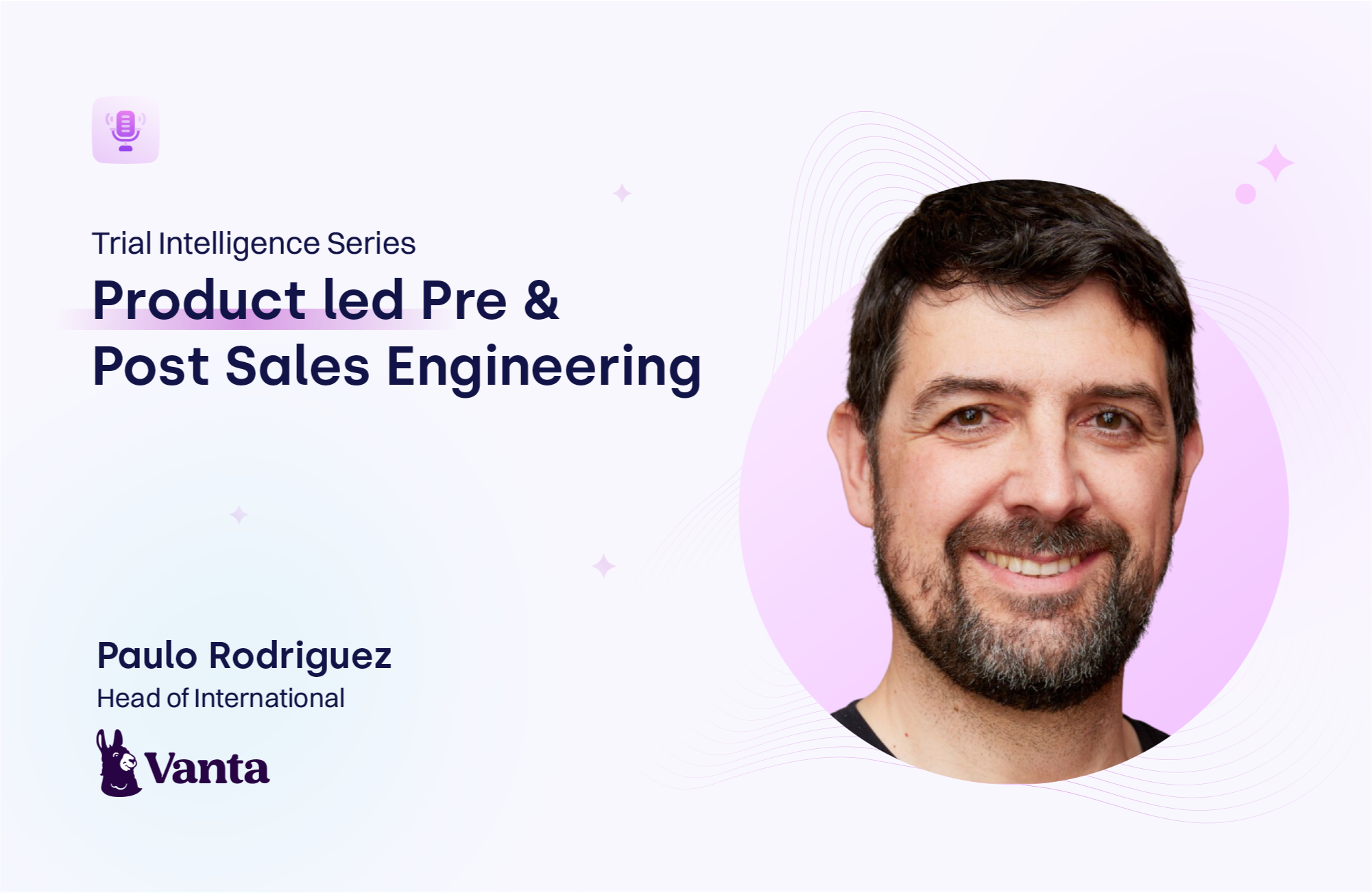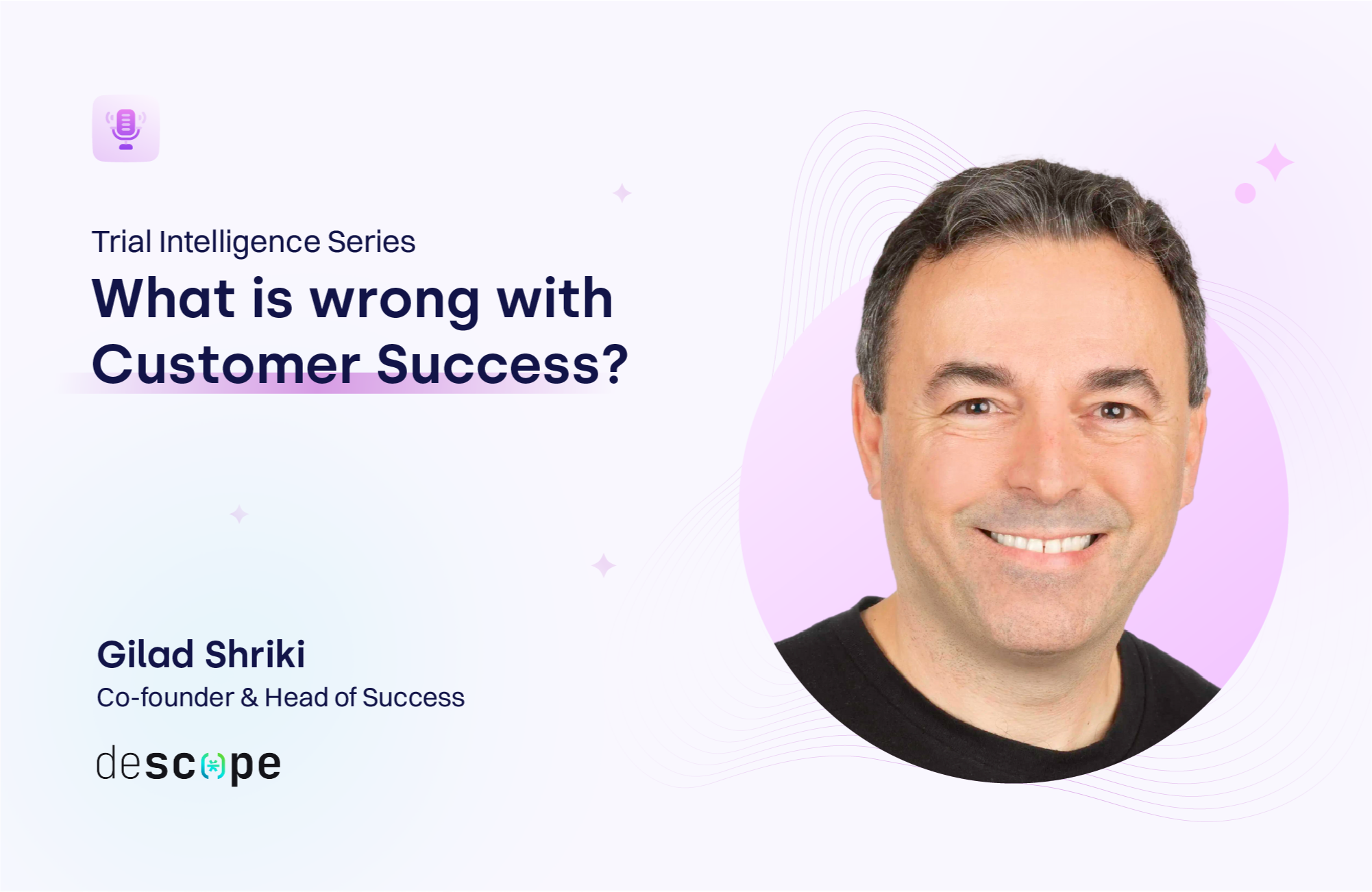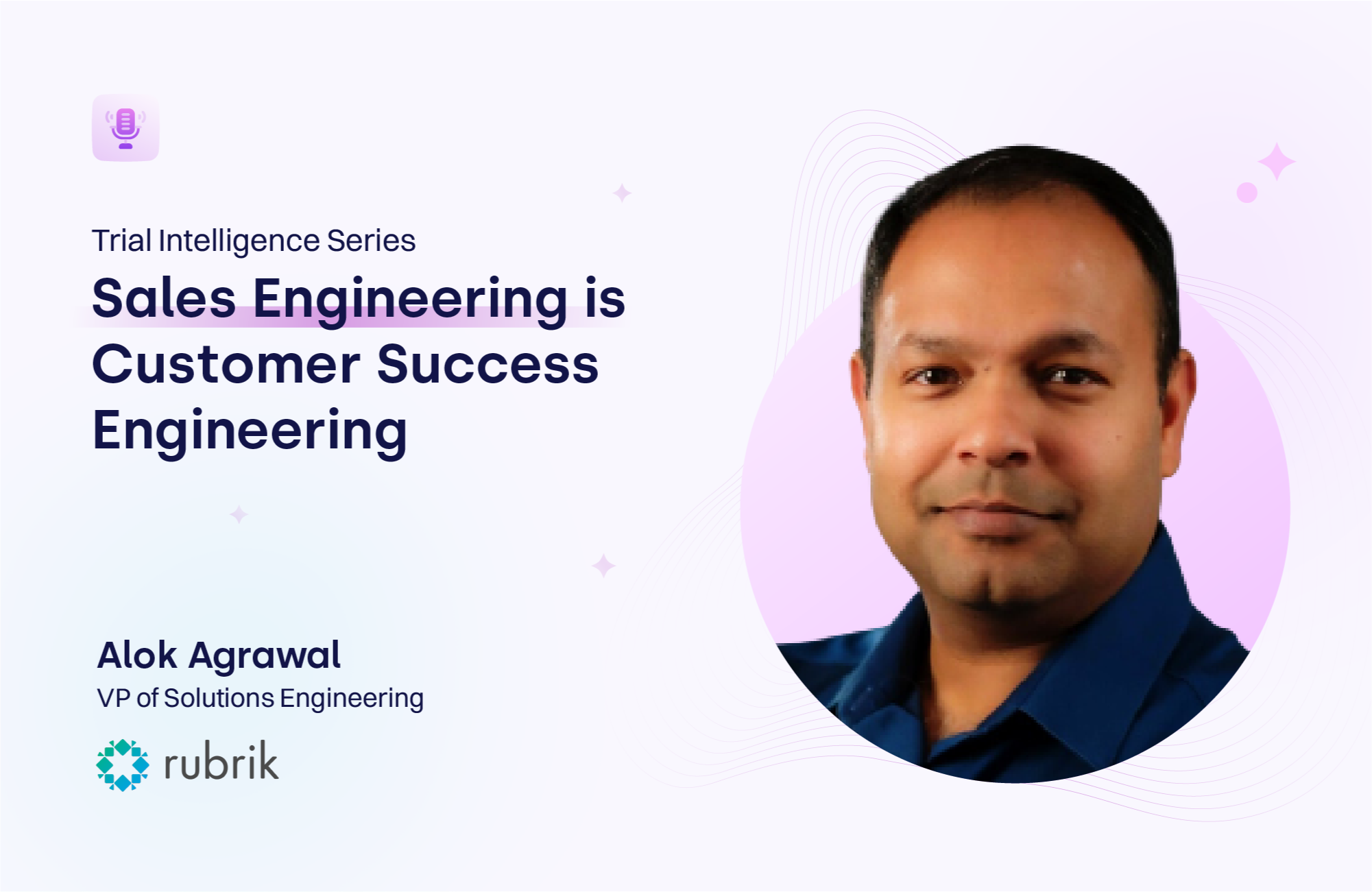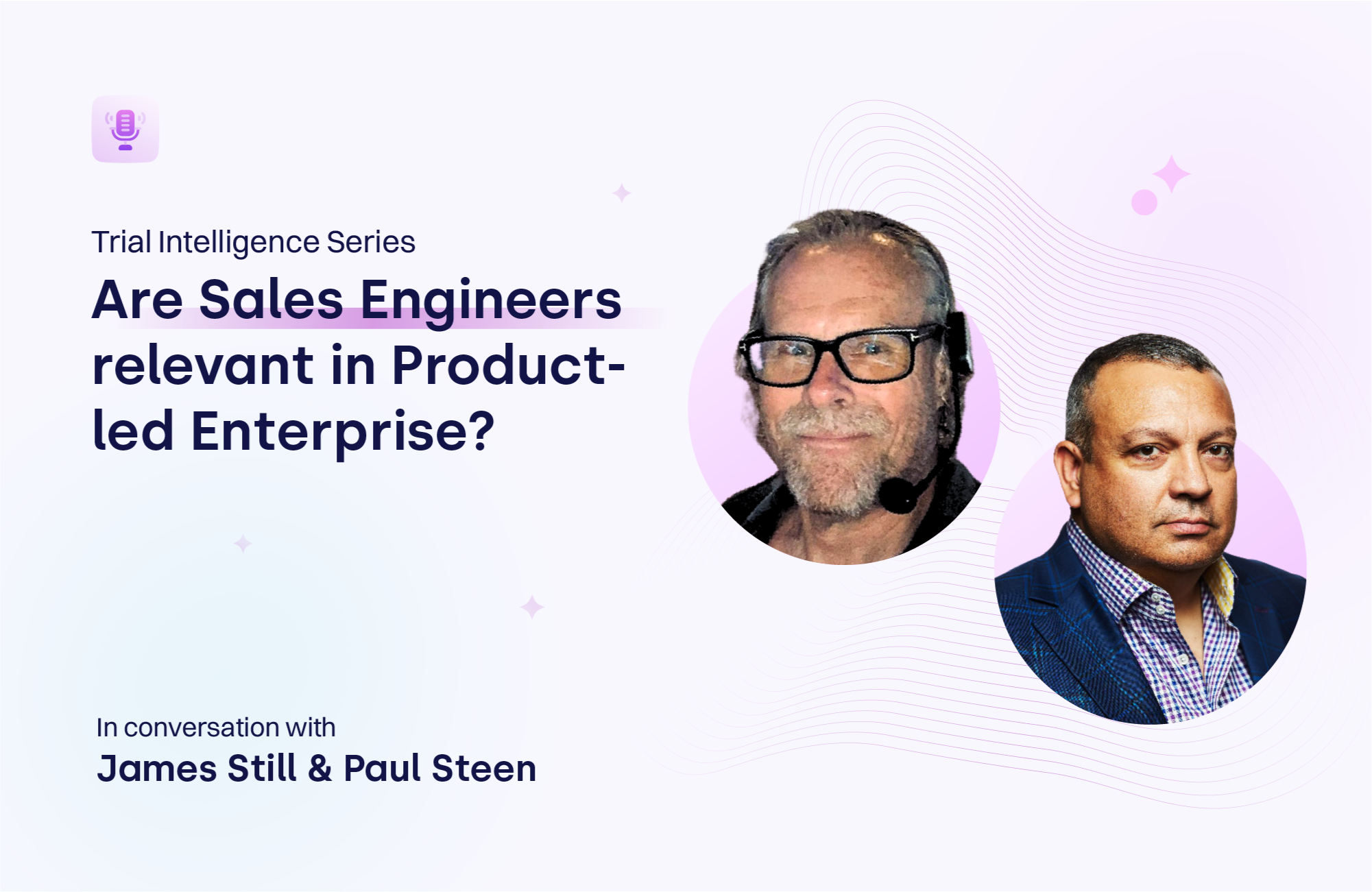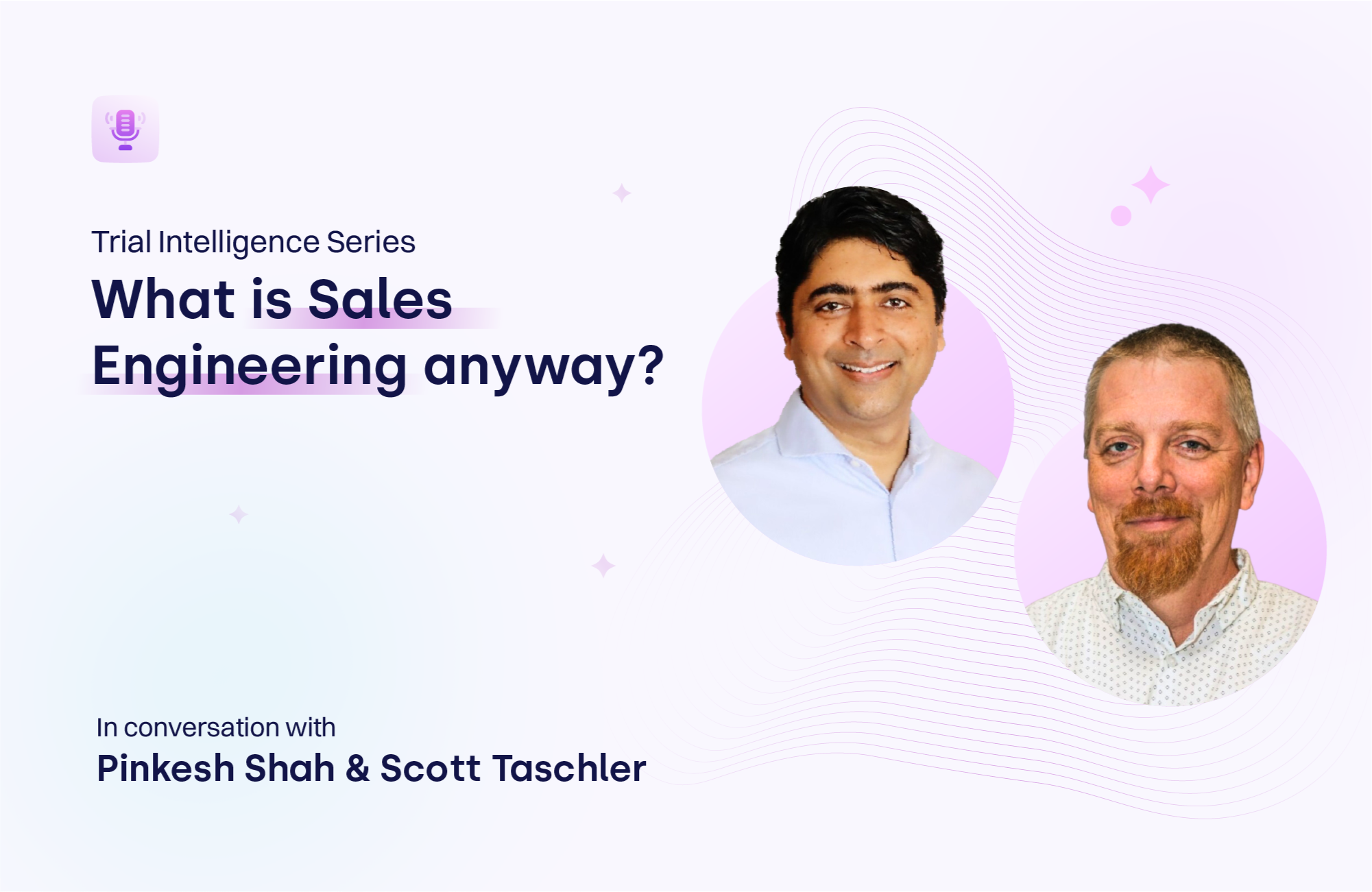TL/DR - A good product-led growth/sales motion has a symbiotic relationship with humans of pre and post-sales engineering. As the company grows, scaling becomes a challenge - humans don’t scale very well, but products do. A PLG/PLS system that can feed human learnings and patterns to drive future iterations of PLG/PLS motions can solve scaling challenges.
Alok Shukla, in a conversation with Paulo Rodriguez, Head of International Sales for Vanta, Former head of B2B growth strategy at Dropbox, on why the future of Enterprise PLG/PLS resides in a symbiotic co-existence between Pre/Post Sales Engineering and Product Automation.
👉 Listen now on Apple Podcast, Google Podcast, and BuzzSprout. Or, you can watch the video podcast. 👀
Chapters
0:00 Introduction
4:47 What is "Internationalization of Sales"?
8:33 Is PLG relevant for Enterprise B2B Sales?
11:37 Are SDRs relevant in PLG?
15:30 How can a sales engineer assist in an Enterprise PLS?
22:38 How easy is it to get data from the product?
27:37 Automate the mundane, Humans for high value
29:15 Should Product Managers be incentivized?
31:35. Should the customer success team have incentives to pitch products?
Transcript below
Introduction
I run the international sales team at Vanta. And that means that I am responsible for all the operations outside of the US, both on the pre-sale and post-sale side of the house. We call it the “Internationalization of sales” at Vanta.As my background, I am a computer science graduate, originally from Spain. Moved to Ireland early in my career, started in Tech support and worked through Symantec, and managed IT for a newspaper. In 2011, I moved to Google Cloud to work as a pre-sales engineer. That kick-started my career in sales. Eventually, I moved to lead B2B GTM strategy for Dropbox, where I spent seven years fine-tuning DropBox's now famous PLG strategy. From there, I moved to Vanta, which is where I am now.
What is “Internationalization of Sales”?
Usually, what it means is that an American company tries to go outside of the US and sell its product there.
It's actually a very natural thing that tends to happen in technology companies, especially American-based technology companies. You reach your product-market fit phase where you know you're consistently selling your product, you know who you're selling to, you actually have like a good, decent product market fit, and you start exploiting that very effectively.At some point, your total addressable market is gonna be limited by the physical constraints of the region that you're in. So you will look for other countries and geographies. However, for e.g., getting into France, Germany, and Japan may be much different from what it was to get into the US in the first place.And then, the willingness to pay for an international customer might be very different than a willingness to pay, let us say, in the US. So one has to figure out the vagaries of the market and figure out specific GTM for that country.
Does PLG work in B2B Enterprise sales?
I think it's a balance. Like there's a lot of value in PLG for B2B, but also, there's a lot of hype in it. I was privileged to work for seven years in a company that was PLG through and through - Dropbox. We did a pretty good job on the B2B side, but there was so much more that we could have done in there.However, it's very complicated because the B2B market does not operate in the same way as the B2C. You will see PLG very strongly on the B2C side. However, for me, one of the biggest challenges in B2B is that the complexity of the persona that you're addressing in a B2B market is way, way higher.
On the B2C side in Dropbox, the person that made the purchase and the person that used the product, and the person that implemented the product, were all the same.
On the B2B side, there are three completely different people with three completely different agendas, with three completely different sets of values. They often don't care much about each other.
So the complexity of building PLG for that scenario is extremely high. So what I've seen being very successful is building PLG motions that allow you to come into that B2B on a particular persona or in a particular scenario, or in a particular use case. Then you use that combined with human-based sales.That may be your ability to then go and take an SDR or even an account executive or a customer success manager to go and contact your customer and value on top of that. You need to capture people on a very basic PLG motion, not in an extremely complex PLG motion because that is actually really hard to do.
What is the value of an SDR in enterprise B2B PLG, where a user, by the intent of signing up, has automatically qualified himself/herself?
When you enter a trial or an evaluation, you already qualify for that trial. I don't think an SDR can really help that qualification.I'm actually gonna answer a question that you're not asking. It's really about how you build that trial. You build a trial for a particular use case, and you funnel people into that trial. However, for your trial funnel to be successful, you need people to need to feel for that funnel use case. If they don't, that trial is not gonna be successful. And I think that is where a human can help in there.At Dropbox, at some point, we would have pre-sales engineers engage with them to try to understand - What are you trying to achieve? How can I help you?Then you can actually engage with that customer and start what came in as a PLG motion, kind of start becoming a human-led motion. And I think that that's where it becomes super interesting to combine human and product-led growth.Product-led growth could actually be a great funnel to generate leads for your human-based motion. And if you have control over your product data and how people interact with the trial and you can find the meaningful factors to trigger contact with a human being that adds incredible value.But again, humans are very expensive resources to engage with a trial, so you want to make sure that sales engineers are indeed being introduced in a trial when they can actually deliver value higher than automation.
Follow-up: Can we use Customer Activity data to drive Enterprise B2B (non-PLG) sales?
You can use PLG motion as an inbound lead generation mechanism for sales engineers. Sales Engineers can triage PLG trials and elevate them to the right sales support level. In addition, they provide a great feedback loop to the product team that is building the PLG motion.What human learns to do and the patterns that humans are able to detect during a sales trial should act as design feedback for PLG teams. This kind of feedback helps an organization to scale when dealing with larger deployments. Remember, humans don't scale very well, while the product scales incredibly well. Only a well-designed product (made from such sales feedback) can help an organization tackle a growth spike.
How hard or easy is it to make sense of customer activity data coming from the product and ancillary systems?
The data is actually easy to get out of the system. The problem is you don't know which data is relevant.
That is actually the big issue. I remember in my Dropbox days, we had this data lake, and 28 factors affected a renewal, and it took us a while to figure out key data points.Once we figured that out, then we started working on prioritizing them. Say, okay, these 5 points are critical. If these five are not happening, we're not gonna renew this customer, or this customer's not gonna go through the trial. So you start building on that, and then you start automating and bringing that knowledge into the product-led sales motion.
So, you are a votary of automating the mundane and letting data guide a pre/post-sales engineer to focus on what is really important?
I put this from a customer lens. If I'm a customer, I will try your product. I don't wanna talk to you unless you add value to my buying process.
Should product managers have revenue incentives to develop products for easier GTM implications?
I think yes and no. In a fast-paced environment, like the ones in which we normally end up working, It's actually very complicated to predict the revenue of particular products unless you have a very stable environment.So most of the time, this will be an exercise where a PM pulls a number out of a hat because it's actually very difficult to predict, especially when you're going into new products, into new personas.
Should customer success engineers/managers be expected to do sales pitches as the bulk of the enterprise sales seems to be in the “expand stage” rather than the “land phase”?
If we, if I can solve this question, that is the answer to the million-dollar question. For me, the line is so blurry between pre and post-sales. I was talking to an Irish founder a few months ago at a series B company, and he was asking me, hey, based on your experience, when should I hire pre-sales and when post-sales?I said, for the time being, they should be the same people. You need to transfer the knowledge from pre-sales and post-sales to each other. If you're not able to transfer that knowledge from both sides of the fence effectively, the pre-sales team will sell a dream that then doesn't materialize in post-sales.When it does not happen, it is like post-sales is not telling pre-sales what works and what doesn't. For example, in my organization, pre-sales and post-sales report to the same person because I think it's paramount that we hold ourselves accountable to the full life cycle of the customer.If I cannot sell a product with the right expectations to the right customer, I can hardly expect them to renew the contract, let alone expand our product range.Like, don't oversell products, which used to happen in the past a lot. From a sales rep perspective, if you look at the incentive, it's like if I sell a big deal, it is somebody else's problem from now on. Which is what used to happen in the past. Whereas now it's more about understanding the customer needs based on the relationship that you have between the pre-sales and the post-sales.
Thank you for reading FunnelStory. This post is public so feel free to share it.

